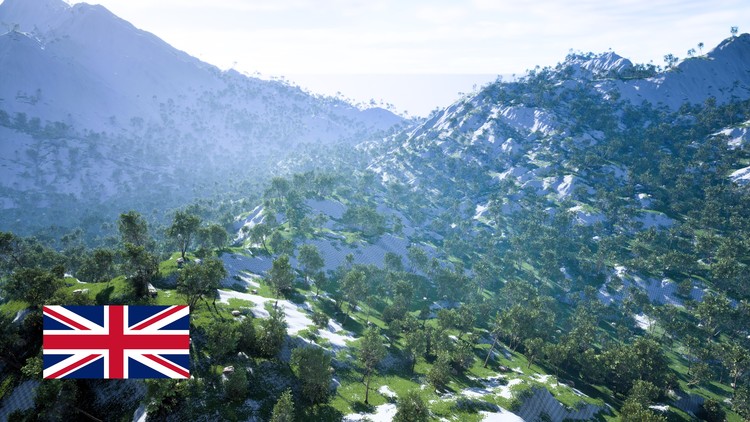Unreal Engine 5 PCG – Procedural Content Generation (English) by Brandon Vox
Release date:2024, August
Duration:11 h 50 m
Author:Brandon Vox
Skill level:Beginner
Language:English
Exercise files:Yes
Unreal Engine 5.4 PCG: Creating Game Environments Using Procedural Content Generation
What is PCG (Procedural Content Generation)?
Imagine you’re tasked with adding trees to a level. You’d need to decide how many trees to place, the spacing between them, and other details. Doing this manually is extremely time-consuming. However, with PCG, you can automate this process, saving time while maintaining accuracy.
What You’ll Learn:
Introduction to PCG:
- Familiarize yourself with the PCG framework.
- Learn how to use the nodes in the PCG Graph.
- Use the Surface Sampler node to create random points on your landscape.
- Use the Static Mesh Spawner node to generate meshes (like trees or objects) from those points.
“Rock” Section:
- Learn how to add rocks to your level and manage the interaction between various objects like trees and rocks. For example, when objects overlap, decide whether to keep the tree or the rock.
Mesh Sampler Section:
- Instead of placing points only on the landscape surface, you’ll discover how to create points on any static mesh.
- For example, use the Mesh Sampler node to spawn mushrooms on tree logs or other objects.
Custom PCG Nodes:
- Learn how to create custom PCG nodes that cater to your specific needs, expanding beyond the built-in PCG nodes.
- Discover how to create secondary points from an initial point, such as adding branches or tree logs around a tree stump.
Building Section:
- One of the most exciting parts of the course is learning to generate buildings procedurally.
- Since a building is composed of many different parts, this section is broken into multiple lectures, where you’ll learn how to apply the nodes you’ve mastered in earlier sections.
By the end of the course, you’ll have the knowledge and skills to create dynamic, efficient environments using Unreal Engine’s powerful PCG tools.





 Channel
Channel





